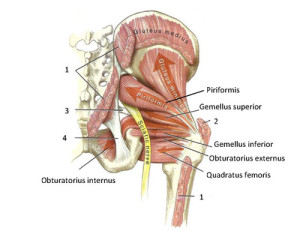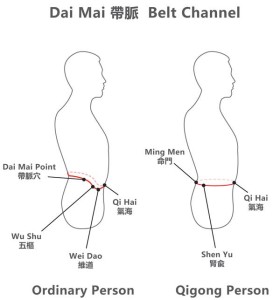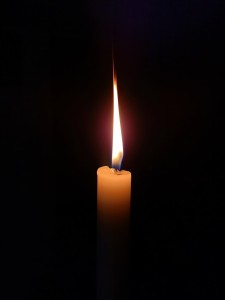Embodying Presence: The Yoga of Being, Belonging and Becoming
Please rise for our national anthem:
https://www.youtube.com/watch?v=3YHVC1DcHmo
Overview and General Principles
Being, aka Presence, is a word pointing to our Natural State, our True Nature. Our spiritual journey returns our attention again and again to Presence, ‘home’, so we may train ourselves to ‘abide’ there at all times. The two faces of Presence are Wisdom and Compassion. Wisdom we can know and feel as the yang quality of vast, unbounded, vibrant spaciousness. Compassion we can know and feel as the yin quality of an open, soft and vulnerable heart.
Belonging is opening our heart to the larger communities of being and life and participating in the collective awakening in a multiplicity of ways. Each class will focus on one of the ‘four faces of the heart’: Loving Kindness, Compassion, Sympathetic Joy and Equanimity. (see Patanjali’s Yoga Sutras I-33)
Becoming is the unfolding, maturing, evolution and manifest expression of our soul’s journey through this specific incarnation. The collective human consciousness, embedded in the macro-phase evolution known as Cosmo-genesis, is on its own journey of maturing and evolving and each of us is a participant in that process as well.
**************
Meditation literally means to ‘stay in the middle’, ‘to stay centered’, ‘to know and abide in your true center’ and the theme of finding and awakening various energy ‘centers’ will appear throughout the series of classes. The big picture is to develop a sense of resting in the vast, vibrant openness of Presence, living life as a conscious, awakened and loving person, allowing the infinite changes of our inner and outer worlds to flow through us. Continuous practice is necessary as this is anything but easy.
Meditation practice involves harnessing the process of attention so we may weed out dysfunctional mental patterns and habits and nurture ones that promote healing, growth and maturity. The center of our meditation is the inner space between the mental states of dullness and distraction. For dullness we learn to raise the inner vibrancy of the body. For distraction we learn to attend to our breathing, settling the mind, and resting in the open spaciousness and our soft and vulnerable heart.
Meditation involves two different yet integrated practices, Meditation as ‘Being‘ and Meditation in ‘Action.
Meditation as ‘Being‘ is the practice of ‘allowing’ whatever arises to be and unfold however it so chooses. Attention rests on ‘no-thing’. It is an evocation of True Nature’ in its open, vibrant and infinite spaciousness. This is a very unfamiliar way of being for most and ‘staying’ or abiding here’ for any length of time requires patience and persistence.
Meditation in ‘Action‘ is sustained focused attention on specific expressions in the world of form that create greater stability, flow, vibrancy and balance to the vehicles of consciousness. When the vehicles (body-mind-senses) are in harmony, it becomes much easier to abide in Being effortlessly. Harmony is a dynamic state, so continuous alertness and practice is necessary.
Meditation Practice, and life, usually oscillate between these two. Over time, this oscillation is experienced as two expressions of Wholeness, Presence or True Nature.
The three primary impediments to Staying in/as Presence are a distracted mind, disturbed emotions, and an unconscious and uncomfortable body.
 The Microcosmic Orbit, as it links the three dantiens, (energetic spaces) offers us a way of practicing that simultaneously works on healing and integrating these three challenges of the body/mind.
The Microcosmic Orbit, as it links the three dantiens, (energetic spaces) offers us a way of practicing that simultaneously works on healing and integrating these three challenges of the body/mind.
By engaging the root of posture and movement in the lower dantien/pelvic region, we: awaken the instinctual ‘brain stem’ wisdom of the ‘gut body/animal body’; ground our energy field in Mother Earth, and discover the ‘freedom’ that comes from knowing both effortless movement and postural stillness (sthira sukham asanam – sutra II-46.
By awakening the heart/lungs/middle dantien /’limbic intelligence’ and grounding this in Mother Earth through integration with the lower dantien, we can transform arising negative emotions based on fear and separation to positive ones based on love, compassion and inter-being. As the emotions find balance, the heart center awakens to the deeper spiritual impulses of self knowledge and the celebration of life. We will also work with the ‘four faces of love’, the Brahma Viharas/Sutra I-33 to nurture the heart energy.
As the lower and middle dantiens are awakening, grounding and integrating, we begin to soothe the ‘neo-cortical’ hyperactive thinking brain and allow our sense of self to softly land in the heart, the center home of Spirit. Our mental activity begins to flow from a sense of wholeness, wisdom and compassion, integrating the three centers (dantiens) of becoming into an emerging, evolving, loving wholeness.
More insight on the Microcosmic Orbit:
Microcosmic Orbit and Trauma
Fascia, Sitting and the Micrcosmic Orbit
Using the Microcosmic Orbit in Asana
Microcosmic Orbit (pt 2)
Yin and Yang
The primary vision of the microcosmic orbit is the continuous re-balancing the flow of energy between Yin and Yang, the primary constituents of the world of form. As seen in the yin/yang symbol, the yang carries the seed of the yin and the yin carries the seed of the yang. Although they can never be separated, the flow between the two can be come compromised.
As a simple/complex example, true independence requires continuous relationship as a ground of support. True relationships require the capacity for autonomy for each member to keep the relationships alive and growing. If my need for independence requires me to avoid the challenging aspects of relationship, then I am inhibiting my own personal growth. The same goes if my need for relationship forces me to sacrifice my own autonomy. There is a dynamic dance uniting the two poles and we need to find and feel the rhythm and keep dancing.
Yin energy is: cooling, internal, toward the earth, resting, restoring, storing, nurturing, water, feminine, winter, night time, relationship.
Yang energy is: warming, external, upward to the heavens, acting, engaging, moving, fire, masculine, summer, day time, independence.
In a healthy state, yin and yang ebb and flow in cycles, as demonstrated on the macro-cosmic level by: the daily  transitions from light to dark and back as the earth rotates on its axis; the monthly transitions of the moon as it moves through its phases; and the yearly transition of the seasons as the earth orbits the sun.
transitions from light to dark and back as the earth rotates on its axis; the monthly transitions of the moon as it moves through its phases; and the yearly transition of the seasons as the earth orbits the sun.
More cosmically subtle are the 26,000 year cycle known as the precession of the equinoxes, where the earth’s axis rotates around the sky changing the ‘north star’ every 2,200 years of so. (This is the dawning of the Age of Aquarius…). And, for the dinosaurs and Pangaeans out there, our solar system rotates around the center of the Milky Way Galaxy every 230 million years of so. Throughout the vastness of the Universe, yin-yang cycles rule.
Our human body-mind, nested within the larger cosmic cycles, also has numerous inner yin/yang cycles that sustain life and urge us on our evolutionary journey. Any embodied healing practice works to open blocked channels and facilitate a free flow of energy through these yin/yang cycles through the cells, organs, organ systems and the three dantiens.
Patanjali, in his sutras on posture, is a Taoist.
II-46: posture is stable and fluid; Taoist: posture balances yin/stability with yang/mobility
II-47 (mastery of posture comes with) letting go of effort and meditating upon the cosmic field; Taoist: dropping resistance and resting in the Tao
II-48 then the pairs of opposites resolve; Taoist: then yin and yang are known as expressions of wholeness.
July 6 Class Notes Plus:
Four Faces of Love (Brahma Viharas): Mudita – Sympathetic Joy
Celebrate the joyful heart energy with others and transmit yours to the world
Conception Vessel: Yin – Front Body – Yolk Sac – Gut body. The ‘sea of yin’. Self nourishment, bonding with the maternal matrix in breath and heart beat (in utero, mother, Mother Earth, returning ‘home’), establishing bonded, heart felt relationships with other beings.
Begins at center of perineum  in the tendon, just in front of the anus (CV-1), and ends at just below the mouth at the lower lip (CV-24). In utero, the Conception and Governing Vessels are linked as the gut tube is closed to the outer world and the navel is the only opening. At birth, the navel center closes and the mouth and anus open to take in air and nutrition from the outer world. The microcosmic orbit is said to be broken at the two ends and our job in embodied practice is to re-link them energetically. We will explore the Governing Vessel next week.
in the tendon, just in front of the anus (CV-1), and ends at just below the mouth at the lower lip (CV-24). In utero, the Conception and Governing Vessels are linked as the gut tube is closed to the outer world and the navel is the only opening. At birth, the navel center closes and the mouth and anus open to take in air and nutrition from the outer world. The microcosmic orbit is said to be broken at the two ends and our job in embodied practice is to re-link them energetically. We will explore the Governing Vessel next week.
Pubic Bones and Symphysis
The two key reference points on the Conception Vessel/ front body for movement and sitting are the  pubic bones/symphysis and the sternum. The most important for our work is the pubic symphysis, a cartilaginous disc that is the center of all movements of our legs. It forms two joints: one with the left pubic bone and one with the right pubic bone. For most of us this area has sensory motor amnesia, which essentially means we have forgotten how to move from these joints.
pubic bones/symphysis and the sternum. The most important for our work is the pubic symphysis, a cartilaginous disc that is the center of all movements of our legs. It forms two joints: one with the left pubic bone and one with the right pubic bone. For most of us this area has sensory motor amnesia, which essentially means we have forgotten how to move from these joints.
The pelvis as a whole, (to be accurate, the pelvi), has six joints, (three for the right, three for the left) that need to move in harmony so we may use our legs for support and movement and to free up the spine. These are the pubic joints, the hip joints and the sacroiliac joints. If the mind ‘thinks’ that ‘the pelvis’ is a solid singular entity, we are in trouble! The primary, and least known and explored joints for spinal freedom are the pubic joints, so we have a lot of re-training to do.
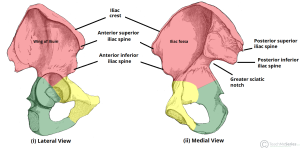 The starting point is to feel/trace the two bony bridges or rami (yellow) that travel out from the pubic symphysis. The downward bridges flow to the green sitting bones/ischia to the area I am calling the bottom of the groin. The upper bridges flow up to the (pink) illia and on to the top of the groin. Thus the pubic bones are in the middle of the groins. Feel the groins as the various muscle fibers, primarily psoas and illiacus, but all hip flexors, that run through the deep front of the pelvis, connecting the spine to the legs.
The starting point is to feel/trace the two bony bridges or rami (yellow) that travel out from the pubic symphysis. The downward bridges flow to the green sitting bones/ischia to the area I am calling the bottom of the groin. The upper bridges flow up to the (pink) illia and on to the top of the groin. Thus the pubic bones are in the middle of the groins. Feel the groins as the various muscle fibers, primarily psoas and illiacus, but all hip flexors, that run through the deep front of the pelvis, connecting the spine to the legs.
This is the pelvic aspect of Tom Myers’ Deep Front Line in his Anatomy Trains Model. In the video linked in the blue text you will see the fascial links of the Conception vessel all the way from the feet to the tongue. (I love the Deep Front Line!!. Thank you Tom!)
Feeling/perception is yin. Acting/moving is yang. Fluids and fascia are the link. Somatic meditation (samyama in asana) involves integrating yang action with yin perception as a single fluid intelligence. We do this in driving a car. Our eyes and ears, hands and feet provide a continuous stream of information from which we make decisions and act to modulate speed and direction. In somatic meditation, we are more swimming than driving, but it requires the same focused and relaxed attention.
The easiest way to explore the pubic region is sitting on a softly firm chair edge. Here we have to apply the traffic light rule. To roll down into pelvic flexion, (untucking) I need to lead the action from the bottom of the groin/lower rami. Otherwise I wlll crash the upper groin onto the lower.
To roll up into pelvic extension, lead from the upper rami/groin or else the bottom will crash into the upper. For many people, both the bottom groin and top groin crashed into each other long ago and are closed, forcing unnecessary strain on the hip (hello hip replacements1) and sacroiliac joints. Creating space and learning to create a ‘double action’ here is essential.
Double Action
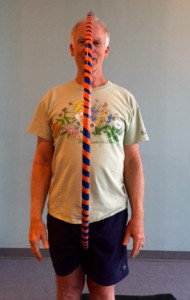 Think of the groins as musculo-fascial therabands (see video linked above). As I roll forward, (flexion) opening or releasing the lower pubic ramus, the bottom of the groin the band stretches/lengthens one way. When I roll up, (extension) releasing the upper ramus/groin, the band stretches/lengthens in the opposite direction. Energetically we can do both, lengthening up and down at the same time, just like stretching the two ends of a theraband away from each other. While sitting, use you fingers to lift the upper groins as you slowly and mindfully roll forward to open the bottom groins. This is double action in flexion, a core action using the pubic bones as the key ingredient.
Think of the groins as musculo-fascial therabands (see video linked above). As I roll forward, (flexion) opening or releasing the lower pubic ramus, the bottom of the groin the band stretches/lengthens one way. When I roll up, (extension) releasing the upper ramus/groin, the band stretches/lengthens in the opposite direction. Energetically we can do both, lengthening up and down at the same time, just like stretching the two ends of a theraband away from each other. While sitting, use you fingers to lift the upper groins as you slowly and mindfully roll forward to open the bottom groins. This is double action in flexion, a core action using the pubic bones as the key ingredient.
We can do the reverse as well. Reach behind you and 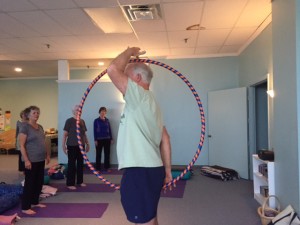 place you hands under your sitting bones. As you begin to roll the upper pubic rami upward into extension, resist with your hands keeping the bottom groins open. Feel a vibrant presence through the pubic and inner pelvis region. Because we are ‘rolling’ back and forth, imagine a the microcosmic orbit as a circle. With every cycle of rolling forward and backward, like a pendulum, imagine the energetic space at the bottom arc of the circle slowly opening, releasing, lengthening and strengthening. We will explore the back of the pelvis in the next class.
place you hands under your sitting bones. As you begin to roll the upper pubic rami upward into extension, resist with your hands keeping the bottom groins open. Feel a vibrant presence through the pubic and inner pelvis region. Because we are ‘rolling’ back and forth, imagine a the microcosmic orbit as a circle. With every cycle of rolling forward and backward, like a pendulum, imagine the energetic space at the bottom arc of the circle slowly opening, releasing, lengthening and strengthening. We will explore the back of the pelvis in the next class.
Sternum
 The Sternum supports the ribs and pericardium (heart protector) and anchors the shoulder girdle and arms through the clavicles. There are three bones to palpate and explore. The manubrium or handle ( green) articulates with the collar bones and the first ribs. The second ribs attach at the joint between the manubrium and the body of the sternum (blue), which anchors ribs 3 through 6. The seventh ribs connect at the joint between the body and the xyphoid process (red). The best way to explore this area is with your fingers and breathing. We want to awaken the joints without using unnecessary spinal action. This will help keep the heart soft and resting into the support of the whole. When the pubic region and the sternal region are awaken and engaged, a large relief is also felt through the spinal. We want the Conception Vessel to become more engaged and the Governing Vessel more relaxed
The Sternum supports the ribs and pericardium (heart protector) and anchors the shoulder girdle and arms through the clavicles. There are three bones to palpate and explore. The manubrium or handle ( green) articulates with the collar bones and the first ribs. The second ribs attach at the joint between the manubrium and the body of the sternum (blue), which anchors ribs 3 through 6. The seventh ribs connect at the joint between the body and the xyphoid process (red). The best way to explore this area is with your fingers and breathing. We want to awaken the joints without using unnecessary spinal action. This will help keep the heart soft and resting into the support of the whole. When the pubic region and the sternal region are awaken and engaged, a large relief is also felt through the spinal. We want the Conception Vessel to become more engaged and the Governing Vessel more relaxed
July 13 Class Notes Plus
Four Faces of Love (Brahma Viharas): Karuna or Compassion
Keep your heart open to the suffering of others and remain sensitive and open to your own wounds and pain. Self Compassion is difficult very important in our own healing. It is hard to be open to others pain when we cannot feel our own.
Governing Vessel: yang, amnion and amniotic cavity, back body, nervous system, separating from the maternal matrix, developing independence, outward moving, going out into the world, exploring new worlds, self protection, action.
independence, outward moving, going out into the world, exploring new worlds, self protection, action.
Runs from the tip of the coccyx (GV-1) to the the meeting point of the center of inner upper lip and the gum tissue (GV-28). Links with the Conception Vessel to form the Micro-cosmic Orbit at the two openings of the gut body, the mouth and anus.
Key Reference Points to explore: GV-2 at the bottom of the sacum (where S4 and S5 fused) , GV-4 at the 2nd lumbar vertebrae, guiding the freedom lumbar curve: GV-14 at C-7, the meeting point of all the yang meridians: GV-18 at the mid occiput, opening the back brain and awakening the sensory cortex: GV-20, 100 meetings, top of the skull/crown chakra. Although technically not on the governing vessel, there is an important point on the circle, yin tang, located between the eyebrows. This of course is the ‘third eye‘.
Integrating Conception and Governing Vessels.
In general, the average human is hypotonic (weak tone) in the yin conception vessel/front body/deep front line/internal organs and hypertonic (too much tension) in the yang governing vessel/back body, spinal muscles. This is reflected collectively as well in our pathological hyper-masculine, thoughts over feelings human culture. This has been the case for several thousand years now, but fortunately we are seeing an awakening and strengthening of the yin/feminine dimension. We must keep nurturing this.
The Yin Yang view shows us that balance and communication continually strengthens both yin and yang and thus the whole. Our current dysfunctional dualistic model is a zero sum game where if one group does better, some other group has to lose. Current political beliefs thrive on this insanity.
Exploring the Governing Vessel
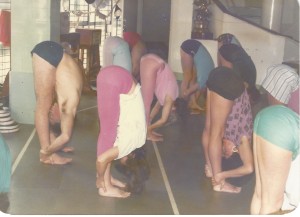 Forward bending poses ideally pacify the hypertonic spinal muscles, but we must learn to do them by opening the groin gates of the front body (see above), so we do not collapse the organs and conception vessel tone. In uttanasana, to release the entirety of the back body, soles to skull, the front body/upper groins keeps elongating down as the bottom groins elongate back and upward. I’m not quite releasing my throat, the upper section of the conception vessel, probably stuck at C-7. This is from Pune, sometime back in the 80’s.
Forward bending poses ideally pacify the hypertonic spinal muscles, but we must learn to do them by opening the groin gates of the front body (see above), so we do not collapse the organs and conception vessel tone. In uttanasana, to release the entirety of the back body, soles to skull, the front body/upper groins keeps elongating down as the bottom groins elongate back and upward. I’m not quite releasing my throat, the upper section of the conception vessel, probably stuck at C-7. This is from Pune, sometime back in the 80’s.
We can do a similar action on the chair. By widening the legs, the upper front rami also 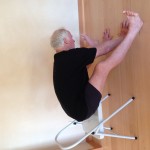 widen allowing more freedom to the conception vessel and. Legs closer together opens the lower bottom gates more. Find where you have the most freedom. Bending the knees takes the hamstrings out of the way and allows more groin length and depth.
widen allowing more freedom to the conception vessel and. Legs closer together opens the lower bottom gates more. Find where you have the most freedom. Bending the knees takes the hamstrings out of the way and allows more groin length and depth.
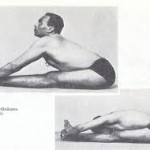 In every forward bend in ‘Light on Yoga, Iyengar completely lengthens the front body as preparation for the completed pose, yin supporting yang and vise versa.
In every forward bend in ‘Light on Yoga, Iyengar completely lengthens the front body as preparation for the completed pose, yin supporting yang and vise versa.
When we go deeper into spinal extension or backbending, we can follow a similar track. From tadasana, pour yourself into uttanasan, leading from the lower pubic rami/bottom groins without collapsing the upper. On the return up lead from the upper rami with out blocking the lower groins. Keep extending up past tadasana as if you are looking at the sky. Keep the bottom groins unlocked as you lengthenup but keep the bottom of the sacrum (GV-2) moving forward toward the pubic symphysis. Bend the knees slightly to lenghten the front of the legs more. Feel the organs and core of the body lifting and lengthening, allowing you to rest into the back body. This gives a very different feel to the backbend.
Double Action for Sitting
In the July 6 class, the double action through the center of the pelvis was from the 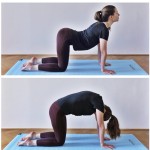 rami or bridges. To roll forward/flex/untuck the pelvis, lead from the lower rami to open the bottom groin gates. To roll back/extend/tuck the pelvis, lead from the upper rami. (The traffic light image) In sitting (or in any pose) we do both, at the same time, gently, lightly but clearly. The basic action for this is the classic cat-cow alterntion. Remember to maintain the double action by sustaining the opposite during the movement. With pelvic flexion, as above, keep the top groins open to avoid lumbar compression. With pelvic extension, as below, keep the bottom groins open to protect the lumbar discs. Also, notice the yin yang of pelvic flexion and spinal extension above, pelvic extension and spinal flexion below. This is an easy action for beginners.
rami or bridges. To roll forward/flex/untuck the pelvis, lead from the lower rami to open the bottom groin gates. To roll back/extend/tuck the pelvis, lead from the upper rami. (The traffic light image) In sitting (or in any pose) we do both, at the same time, gently, lightly but clearly. The basic action for this is the classic cat-cow alterntion. Remember to maintain the double action by sustaining the opposite during the movement. With pelvic flexion, as above, keep the top groins open to avoid lumbar compression. With pelvic extension, as below, keep the bottom groins open to protect the lumbar discs. Also, notice the yin yang of pelvic flexion and spinal extension above, pelvic extension and spinal flexion below. This is an easy action for beginners.
In the July 13 class, the same double action has two new reference points: the top of the pubic symphysis (CV-2) and the bottom of the sacrum or GV-2.
Untucking/rolling forward/flexion begins from the pubic symphysis at CV-2 releasing the bottom gates. Here is the tricky part. In untucking, as the bottom gates open, GV-2, the bottom of the sacrum continues to roll in the opposite direction, toward the pubic symphysis (tucking to complete double action and simultaneously keeping the upper gates open).
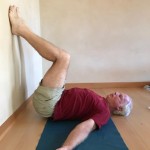
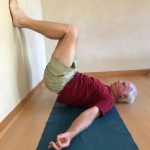
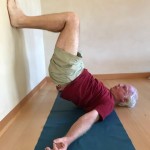 Same principle in reverse: in extending the pelvis, GV-2 moves toward the pubic symphysis as the upper gates open, but CV-2 at the pubic symphysis moves in the opposite direction, toward GV-2 to keep the lower gates open. No need to use your hands like we did in the July 6th class.
Same principle in reverse: in extending the pelvis, GV-2 moves toward the pubic symphysis as the upper gates open, but CV-2 at the pubic symphysis moves in the opposite direction, toward GV-2 to keep the lower gates open. No need to use your hands like we did in the July 6th class.
As seen above, in addition to playing with this action in sitting, we can change gravity. We can have our feet on the wall, beginning a ‘shoulder stand like’ action; we can have our feet up on a bolster; and we can have our feet on the floor. Moving slowly up and down, pause to check that both ends of the action are open. To add some leg juice, put a foam yoga block or inflatable ball between your thighs to add the adductors, and keep that action steady as you flex and extend.
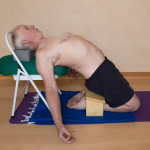 Other poses to explore are down dog to up dog and back, and, knees willing, virasana to supta virasana. Using support for the three ‘masses’, block, bolster and bench, allow a more yin exploration of a very yang pose. Here we can add the sternum and base of skull to the pubis/groins, so each of the three dantiens are activated, engaged and relaxed.
Other poses to explore are down dog to up dog and back, and, knees willing, virasana to supta virasana. Using support for the three ‘masses’, block, bolster and bench, allow a more yin exploration of a very yang pose. Here we can add the sternum and base of skull to the pubis/groins, so each of the three dantiens are activated, engaged and relaxed.
In the July 20th class, we will add one more ‘double action to integrate the legs into this dynamic action.
The Giving and Receiving Reflex.
This is traditionally called the Moro and described as a startle reflex, but Bonnie Bainbridge Cohen sees a very different process that can be explored to bring more harmony and balance. The baby is reaching out, engaged and giving its full attention quite happily. This yang ‘reaching out’ will be followed by a yin receiving as the arms come back in, perhaps holding something
We can play with this with the breathing to find two slightly different experiences. First, allow an inhalation to open your arms, opening the front of the organs, extending the spine and reaching out into the world. This is a yang action. With an exhalation, bring the arms back in an embracing action, feeling the back of the organs opening, slightly flexing the spine. This is the yin action.
Now try the reverse. On the inhalation, gather the arms in an embracing action, slightly flexing the spine, releasing and opening the back (yang aspect) of the organs. On the exhalation release out into the world, opening the front (yin) organs. How do these feel? Are they different? Play with the yin and yang of the movements and then come back to neutral, the center between the two poles. How does your back body/governing vessel feel? How does your front body/conception vessel feel? Find your center and rest in Presence.
July 20 Notes:
Four Faces of Love (Brahma Viharas): Upeksha or Equanimity
Remaining grounded and stable amidst the intense emotions that can arise, especially fear and anger, is a challenging but important heart opening practice.
Meditation Mantra: Pause – Relax – Open – Allow
each word can act as its own mantra:
Pause – stepping off the train of thought and come back to presence
Relax – softening any tension you may feel, with the help of the exhalations
Open – inviting unconscious tension to begin the journey of letting go
Allow – accepting with an open heart what the unconscious reveals
Review first two classes: see above
New Double Action in the Pelvic Region
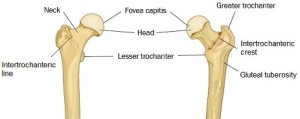 We have so far worked with the upper and lower pubic rami (class 1) and the Symphysis and lower sacrum, (class 2). We now want to integrate the femur bones through rotation and the greater and lesser trochanters, the large bony protuberances where muscles attach and shape the bone.
We have so far worked with the upper and lower pubic rami (class 1) and the Symphysis and lower sacrum, (class 2). We now want to integrate the femur bones through rotation and the greater and lesser trochanters, the large bony protuberances where muscles attach and shape the bone.
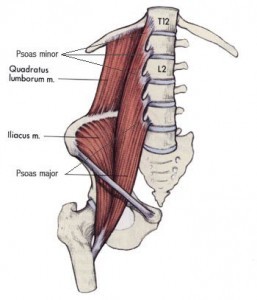
The primary deep core muscle group, the illio-psoas attaches to the lesser trochanter on the inner back section of the upper femur, or what I have been calling,the bottom of the groin. In forward flexion, we lead with the lower rami to begin lengthening the core, and now we see that lengthening will also invite the upper thigh to internally rotate. Conversely, internal rotation can initiate forward flexion/bending.
The great trochanter, on the outer femur, is the attachment point for several short strong muscles that can externally rotate the femur, or help extend the pelvic bones.
We can now link internal and external rotation with flexion and extension, creating a ‘double’ double action. In tadasana, with the feet slightly turned inward, press down on the inner side of the feet through the big toe and inner heel, without medially collapsing the arches. This grounds the inner thigh-bottom groin downward, as in pushing off on a skate blade in skating. You will feel a slight forward bending action at the bottom groins.
At the same time, without losing the action of the inner legs/feet, externally rotate the femurs, grounding the outer legs into the little toe/outer heel, without collapsing the arches outward. You will also feel a slight extending of the hips/upper groins to balance the inner thigh/bottom groin action. As you do both the double action of the femurs internally and externally rotating and the double action of the pelvis flexing/extending, add a third double action with the bottom sacrum (GV-2) moving to the pubis (CV-2) as the pubic symphysis (CV-2) moves in the opposite direction towards GV-2. This third action brings the pelvic bowl alive in all directions and dimensions. Relax the rest of the body to receive the support.
We have now discovered the Girdling Vessel or the Dai Mai, our ‘frisbee’ parallel to the ground. In this great drawing, we see the healthy Dai Mai in the Qi Gong person with the lift and support at the fron of the girdle. The energy of the ordinary person causes a sagging at the front of the lower dantien. this can also be felt as a tipping in the lower down inside the pelvis, at the pelvic inlet. 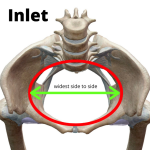 (Thanks to Ruth Knill for alerting me to this wonderful image. All of our micro-adjustments and double actions in this region are designed to align, awaken, and increase the vibrancy of the lower body, to stabilize and ground the heart/emotional center in the chest and the intellectual center in the skull.
(Thanks to Ruth Knill for alerting me to this wonderful image. All of our micro-adjustments and double actions in this region are designed to align, awaken, and increase the vibrancy of the lower body, to stabilize and ground the heart/emotional center in the chest and the intellectual center in the skull.
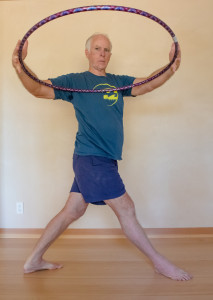 We can explore the Dai Mai in all twisting postures, feeling the balancing of the centrifugal (from the center of the ring to the periphery), expanding yang energies with the centripetal (from periphery to the center) condensing yin forces. Notice I am also balancing our ‘giving and receiving reflex’ from the previous class. (see above)
We can explore the Dai Mai in all twisting postures, feeling the balancing of the centrifugal (from the center of the ring to the periphery), expanding yang energies with the centripetal (from periphery to the center) condensing yin forces. Notice I am also balancing our ‘giving and receiving reflex’ from the previous class. (see above)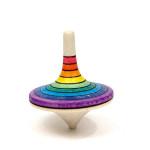 .
.
When we add the Chong Mai in the next class, will will see how these two create a stabilizing balanc, like a spinning top.
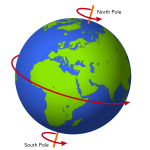 If you want expand your field of awareness, you can visualize Dai Mai and Chong Mai as the equator (or even the Tropic of Capricorn) and the center axis of the earth. More Cosmic? How about our Milky Way Galaxy.
If you want expand your field of awareness, you can visualize Dai Mai and Chong Mai as the equator (or even the Tropic of Capricorn) and the center axis of the earth. More Cosmic? How about our Milky Way Galaxy.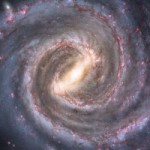 Spirals, circles and spheres everywhere!
Spirals, circles and spheres everywhere!
July 27 Class Notes:
Four Faces of Love (Brahma Viharas) Maitri/Metta or Loving Kindness
The greatest gifts we can offer the world are simple acts of kindness, whenever and wherever possible. These evoke our basic goodness, our Buddha Nature, and allow it to blossom. The Dalai Lama was once asked about his religious beliefs. His simple answer: my religion is kindness.
Some Helpful Metaphors
An easy way to visualize and feel the fullness of embodiment is through the metaphor of the candle, as seen here on the left. The wax and wick of the candle represent our physical mass, our flesh and blood that has weight and responds to gravity. We can put it on a scale and ‘weigh’ it.
The flame of the candle is our qi or prana, our ‘energy body’. Not weighable, but easily felt as heat, vibration or movement, and directly accessible as our breathing. The physical body tends to be dull, but the energy body enlivens and awakens it.
The light of the candle is the most subtle. We see the effects more than the light itself. The flame is not the light, but reveals the light, which reveals everything else. We all are inner ‘light’, but it is often obscured by dullness or distraction. As the physical body and energy body become more in harmony, the light begins to emerge in consciousness. We begin to ‘see’ as the ‘Seer’, from the inner light, from an innocence of a baby, rather than from our own pre-conditioned conclusions and beliefs. With innocence also comes clarity and confidence to embrace the darkness, the infinite background in the photo above, where light and darkness both resolve into Ultimate Mystery.
In non-dual reality, darkness is the yin to the light’s yang. Darkness is not something to be feared but embraced as an expression of wholeness. When it is repressed into the unconscious, the energy of repression builds up pressure in the form of paranoia, anger and fear. This fear is projected onto ‘others’, manifests as acts social and cultural discrimination, extreme racism and often explodes out in acts of violence.
The capacity of embracing darkness first requires the willingness to look at one’s own unconscious fears and holding them in spaciousness and unconditional love. This is not easy, and may require the assistance of therapy. Going into the darkness is a journey of the soul into Ultimate Mystery where even Darkness and Light drop away into the unnameable, ungraspable Tao.
More layers of the metaphor;
The Candle as the Three Treasures of Taoism:
Working with the Three Treasures
A Brief Editorial
Light is ever-present. It is an expression of Presence. But we must be careful in handling our metaphors. There tends to be, in the Judeo-Christian-Islamic-Western mind field, an unconscious sense of duality where life is an eternal struggle between ‘Good’ and Evil’, between God and the Devil. There is no intergation of duality, no sense of ‘wholeness’; only conflict. In many ‘New Age’ circles, the ‘light’ represents ‘Good’ and therefore ‘darkness’ represents ‘evil’. Darkness is to be feared and fought against.
Recently there have been articles on how many ‘spiritual practitioners’ and yoga teachers, especially here in California, have become major players in spreading the insanity of Q-anon; BBC news, Vox.com, LA Magazine. And fortunately, some push back: Rolling Stone.
Q-Anon and many other Trumpian conspiracy promoters prey upon the ‘good vs evil’ mental program, taking advantage of peoples inherent desire to ‘do good’ in the world by defining easy target ‘enemies’ such as Big Pharma’. (The corporate world, on many levels, certainly deserves major criticism.) Soon the ‘enemy’ becomes science, and then a cabal of conspirators stealing the election from the fearless leader Donald. Collective insanity is a scary thing! And it is an emergent aspect of the Collective Awakening. All of this resolves in Stillness. Keep practicing!
***********
The River as Metaphor
Photo from John Salvino on Upsplash.
The river is flowing energy (water) contained between two banks. The flowing energy is our own life force, our qi or prana and the banks are rigidity and chaos. This metaphor is easily felt during meditation practice.
Our intention in meditation is for the mind to remain calm and alert. When the mind gets stuck on a thought, or train of thought, that won’t let go, we have become grounded on the bank of rigidity. Same with a mind that has become stuck in dullness. We nudge the mind back into flow by bringing a gentle attention to the breathing
When the mind jumps from one thought to another, the monkey mind syndrome, we are stuck on the opposite bank of chaos. By bringing our attention down into the pelvis and allowing the breathing to settle here we return the mind to a calm gentle flow. The width of the river is our band of tolerance that can transfer to our daily lives. The wider the river, the more adaptable we are to unpredictability of life. When the river speeds up, or when obstacles arise, like giant boulders and eddies or rapids, can we stay in the flow and not get hung up on either bank or capsize.
Life requires both stability and flexibility. Too much stability becomes stagnation and rigidity. Too much flexibility becomes chaos. Patanjali describes posture, how we embody of life force, as the balance of stability (sthira) and flexibility or mobility (sukham). In Taoism , it is yin stability balancing yang mobility. We discover the suble roots of this balance in meditation practice.
********************
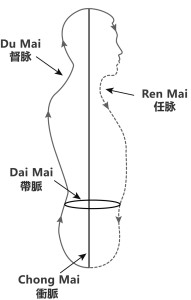 The Thrusting Vessel, Chong Mai
The Thrusting Vessel, Chong Mai
Chong Mai is the ‘blueprint of the body’ embryologically speaking. It creates a central axis from tail to head around which our bi-lateral symmetry emerges. In energetic anatomy, it also appears as the sushumna nadi in India and the staph of the caduceus in Greece. We can begin to feel its presence when we return to the moments of its emergence as the beginning of the mesoderm at the lower junction of the Endoderm / Conception (Ren Mai) and Ectoderm / Governing (Du Mai) vessels.
.
We begin by tracking energy down the lower conception vessel on the front body, and simultaneously down the lower governing vessel on the back body so they meet at the root of the body. They then converge and an energy line begins to rise up into the to the middle of the lower dantien. At that point, the energy diverges. Some returns back down and the rest continues to ascend upwards. Our attention is on feeling the double action, simultaneous ascending and descending at the center of the lower dantien.
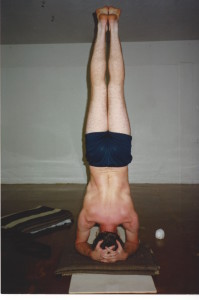 This is easily done sitting in a chair and practicing getting up and sitting down from the lower dantien double action. Also practice with the double action of the trochanters/femurs from the July 20th class to create a double-double action in Tadasana, and any other standing pose of your choice. The descending action from the lower dantien becomes a lifting action in inversions such as sirsasana. Notice the energy blockage inn the center of the body where the spinal muscles are dense and there is insufficient organ support. So young, so willful!
This is easily done sitting in a chair and practicing getting up and sitting down from the lower dantien double action. Also practice with the double action of the trochanters/femurs from the July 20th class to create a double-double action in Tadasana, and any other standing pose of your choice. The descending action from the lower dantien becomes a lifting action in inversions such as sirsasana. Notice the energy blockage inn the center of the body where the spinal muscles are dense and there is insufficient organ support. So young, so willful!
To be continued in the Fall. I will be including insights for Patanjali’s Yoga Sutras and the five Koshas from the Yoga tradition as well as more exploration of the Taoist model of energetic embodiment. Keep up your practice, keep dancing, be kind.


